Ukraine update: It's groundhog day, as Russia learned no lessons from its Kyiv failures
This post was originally published on this site
Ukraine President Volodymyr Zelenskyy felt like Groundhog Day, answering the same questions “what do you need?” from world leaders time and time again. Writing about this war feels the same way.
The first five weeks of the war, we didn’t just talk about Russia’s logistical struggles, but of Ukraine’s abilities to capitulate on those struggles for maximum chaos and destruction. Here’s a map from mid-March, before Russian forces were pushed out of northern Ukraine.
Unable to capture major Ukrainian cities along those routes, Russia tried to “contain” them while the spearhead of their invasion force bypassed them in their mad scramble toward Kyiv. Even little Hlukhiv, population 32,000, on the Russian border itself, remained in Ukrainian hands. Mighty Russia couldn’t conquer a simple small town on a major highway toward Kyiv, after Ukrainian defenders killed 15 Russian tanks with Javelins in the opening hours of the war.
On March 9, Russia was still struggling in the Hlukhiv region. At the time, the Institute for the Study of War concluded, “This continued fighting likely indicates that the Russians are struggling to consolidate control over this lengthy line of communication and that Ukrainian forces are actively contesting it. That phenomenon may partially explain the relative paucity of Russian activity reported in Kyiv’s eastern outskirts in the past 24 hours.”
By leaving Ukrainian strongholds behind, those supply lines were easy pickings for territorial defense, special forces, and other Ukrainian armed units. Russia’s spearhead elements ground to a halt, lacking fuel, ammunition, food, and other necessities of life. Much of Ukraine’s armor today is a legacy of this folly—Russians simply walking away from their equipment after they’d run out of fuel, or they’d get stuck in the mud with no means to pull them out.
So Russia embarrassingly conceded Season One to Ukraine, surrendered their northern effort, and set about to “reset” their war focusing the bulk of their energies on the eastern Donbas front. And the result? We’re back to long, unsecured supply lines, relentlessly harassed by Ukrainian forces.
Two fuel tankers and a self-propelled artillery gun? This is the war jackpot! Russia’s army stalls without fuel, like it did around Kyiv, and removes Russia’s artillery from the picture, and there’s very little left. I wasn’t able to find a geolocation of this ambush, but we can guess:
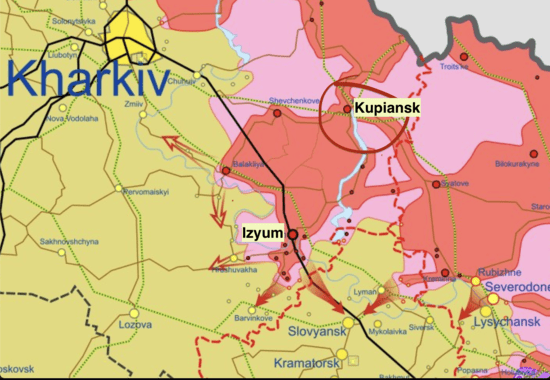
Once again, Russia is unable to take a major city along their lines of supply—Kharkiv. Kupiansk is Russia’s logistical hub in the region—two major rail lines and several highways from Russia converge on the town, as well as a third rail line (and more roads) from the Russian-occupied east. Troops and equipments have to move down to Izyum on roads that are easily accessible both to Ukrainian ground forces on the western flank, and even more importantly, its artillery.
As long Russian forces are within Ukrainian artillery range, they are in severe danger. Look at these three tanks trying to hide in the courtyard of a civilian apartment complex:
There’s a reason that Ukraine was screaming for more artillery. And, there’s a reason why NATO has decided that yeah, good idea.
This entire thread on artillery is great, by Mark Hertling, former commander of U.S. Army Europe. This is the nut:
So we’re back to Russia’s exposed supply lines, and Ukraine feasting on them—but now with added artillery firepower. But that’s not all! There’s more deja vu. Remember how Russia spread out its attacks over 4 axes and over a dozen avenues of attack? Well, uh, guess what.
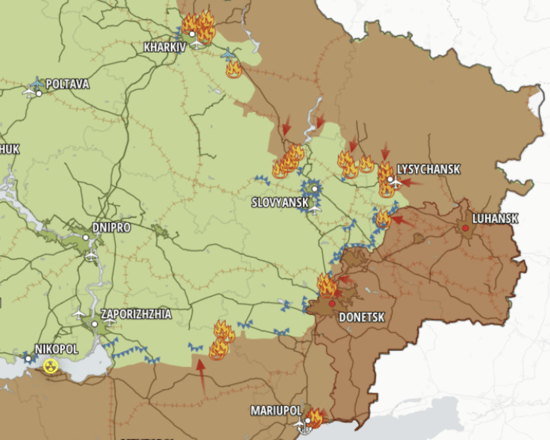
Instead of focusing on a single massive assault, punching through defensive lines, rushing reinforcements through the breach, grabbing ground, cutting off remaining defensive lines, and forcing a desperate, chaotic Ukrainian response …. we’re back to the same under-supported broad attacks that have been the hallmark of this entire war. In the Izyum salient alone, Russia has attempted attacks in five different directions over the last few days:
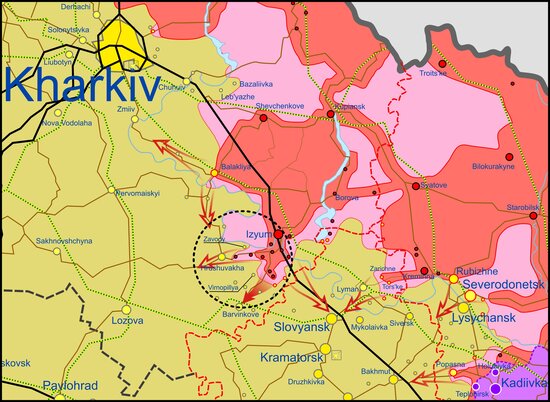
Russia isn’t consolidating its forces for a massive offensive, it is simply feeding them into the wood chipper, hoping to erode Ukrainian defensive lines through wave after wave of seemingly random and uncoordinated attacks. Tactically, Russia has made some gains—like taking the town of Lozova on the eastern bank of the Oskil river, but overall, ISW assessed that “[t]he military situation did not substantially change in the last 24 hours, and Russian forces are continuing to conduct localized attacks while feeding in additional reinforcements instead of pausing to prepare for a wider offensive.” As we’ve seen, each one of these probes saps a little more of Russia’s strength, regardless if they manage to take a small town here or there. Ukraine has plenty of land to cede as it buys time for reinforcements to arrive. The cost is what matters, and Russia continues to pay a steep price.
To the north, Ukraine continued to purge Russians around Kharkiv, taking the town of Udy on the Russian border, and making a move on Kazachya Lopan (which Russia claims to have repelled). Look what’s just northeast of those two towns:
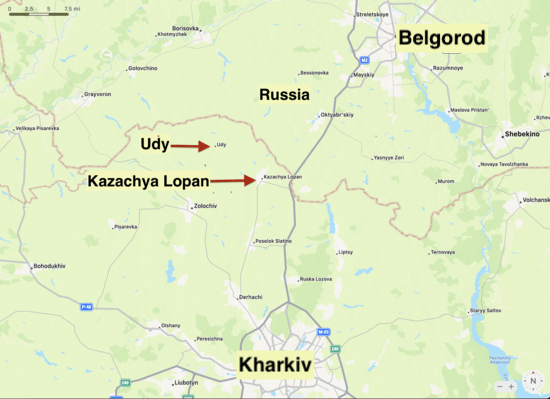
Belgorod, Russia, is only around 50 kilometers (30 miles) from the Ukrainian border, putting it in range of extended-range artillery, MLRS rockets, and short-run air attack (as we’ve already seen). Russia has to be freaking out, which should force it to redeploy forces in the area, “fixing” them in place, unable to join the fight down in Donbas.
And down south, near Kherson, Ukraine has been shelling the f’ out of Russian forces amidst unconfirmed rumors of significant Russian losses, but no territory has changed hands. Remember, the terrain is open and unprotected, and Russia can lay down a wall of artillery to fend off Ukrainian advances. Ukrainian general staff will have some hard decisions about where to send those 96 M777 towed howitzers they’re getting from the United States and Canada, as well as the self-propelled guns they’re getting from France and the Dutch. Much will likely depend on whether Russia can put serious pressure on the Donbas front. Because if things remain static’ish, I’d send a big chunk of that artillery down south and cleanse the Kherson region of Russians, before sweeping east, through Mariupol, and then up to Donbas.
Let’s check on Izyum weather:
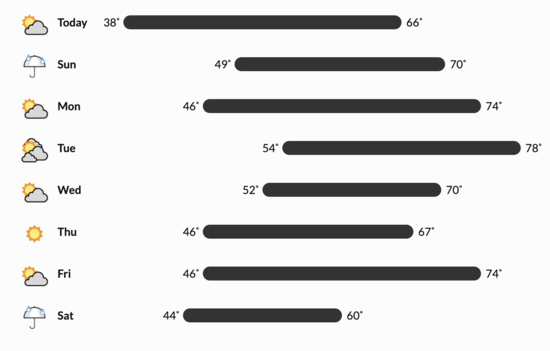
A dry week, but the rainy season isn’t over.
